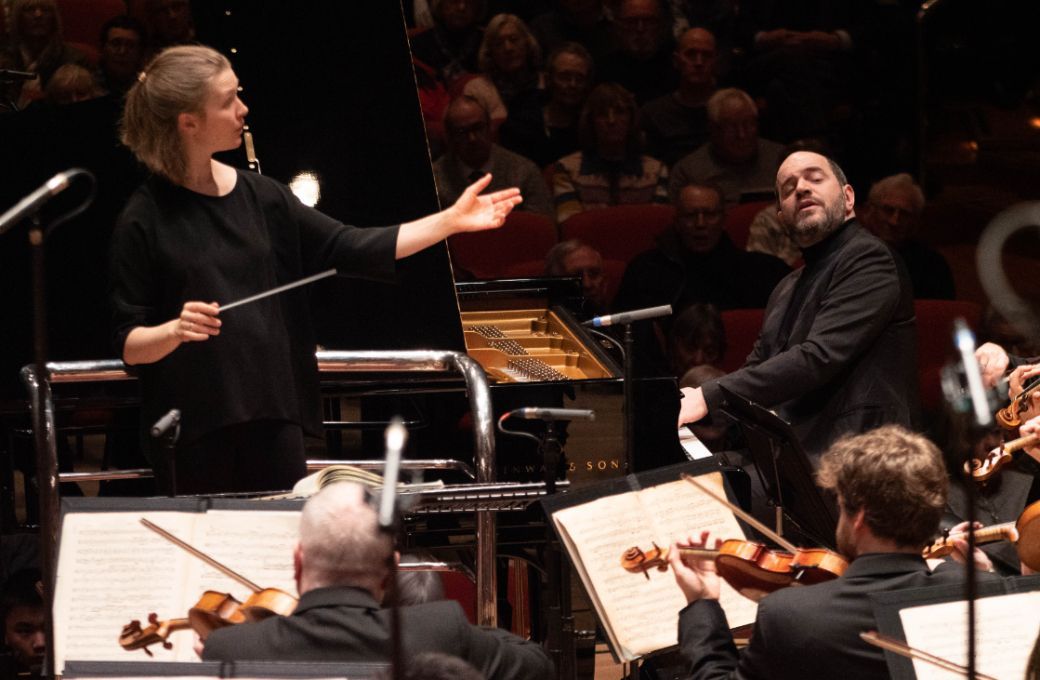Wednesday night’s City of Birmingham Symphony Orchestra concert blew hot and cold. During her tenure at the CBSO this kind of emotional oscillating has been one of the primary characteristics of Mirga Gražinytė-Tyla’s approach. On this occasion there were, admittedly, times when it paid off. In Weinberg’s Sinfonietta no. 1 the music itself veers between poles of superficiality and sensitivity. Thus the opening Allegro risoluto became a full-blooded romp bringing to mind Cossacks on horseback, while the highly motivic closing Vivace was similarly driven, evoking a Brucknerian chugging momentum. In between, via a thoughtful horn solo, the slow movement was a beautiful pastorale tinged with something that may or may not have been melancholy (though with Weinberg it’s easy to assume it is), while the third movement blurred the distinction between light music and something more ghostly.

The drawback of Gražinytė-Tyla’s polarised approach was all too evident in the suite drawn from Prokofiev’s ballet Romeo and Juliet. No-one could deny the apparent weight of feeling through the more tender movements. That said, the CBSO did somewhat milk these sequences – at times luxuriating in a full-on, Hollywood sheen – such that they took on a rather saccharine quality. Yet the depth of feeling was there, as was the danger and violence in the suite's more volatile passages. The famous opening was a superbly intense mingling of terrible clamour segueing into a testosterone-fuelled muscular posturing, full of swagger and bravado.
As in the Weinberg, when Prokofiev tilts between these extremes of light and dark the results were hugely impressive. Yet much of the music is far from being one extreme or the other, and a great deal of this was lost within Gražinytė-Tyla’s wild oscillations. Thus the work’s more measured music, such as Friar Laurence and the Dance of the Antilles Girls, felt tepid and inconsequential, less music in its own right than a kind of treading water before the next significant push one way or the other. Considering how much of the suite exists in precisely this dramatic middleground, it unfortunately meant that a lot of the piece simply sounded like a sequence of extended longueurs, as a whole becoming an exaggerated all or nothing.
The most nuanced and effective performance came in Schumann’s Piano Concerto in A minor, primarily because it was soloist Kirill Gerstein who was calling the shots. However, despite being in the spotlight, literally front and centre, Gerstein’s attitude was strikingly modest, even understated, approaching the work as if performing in a small salon rather than a large concert hall. His reading of the work was refreshingly individual, eschewing an excess of legato in favour of a more spiky opening that led into a deeply ruminative development.
There was a similar lack of showboating in the final Allegro vivace, Gerstein determined to convey its metrical caprice with a mixture of playfulness and, above all, elegance. Accompanying this, Gražinytė-Tyla was forced to keep the CBSO relatively limited, though she allowed them full rein during the occasional tuttis, which came to sound false in light of what Gerstein was clearly trying to do. The work was at its best in the central Intermezzo, playing up its overt Mozartian qualities in a beautiful back-and-forth between light but earnest lines and poignant orchestral responses.


